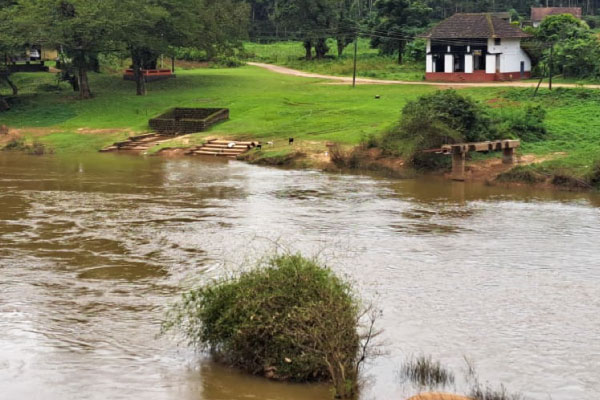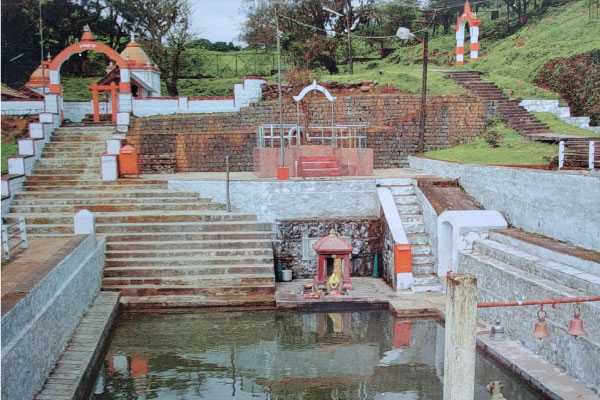
ಶ್ರೀ ತಲಕಾವೇರಿ ದೇವಸ್ಥಾನ - ತಲಕಾವೇರಿ
Shri TalaKaveri Temple - Talakaveri
Located at an elevation of 1,276 meters above sea level on Brahmagiri Hill in Kodagu district, Talakaveri is the source of the sacred river Cauvery and one of the seven sacred rivers mentioned in Hindu scriptures. The temple complex includes a small spring known as Tirtha Kundike or Brahma Kundike, where the sacred river originates. Beside Tirtha Kundike is a small shrine and a large tank where thousands of pilgrims come to take holy baths, perform rituals and offer prayers. Kaveri Sankramana, (Tula Sankramana) which falls on October 17th or 18th each year is celebrated, features special poojas at temples and homes in the Kodava and Kodava Bhashika communities. Theerthodbhava is the phenomenon involving the appearance of holy water at Brahma Kundike. This water is considered holy, collected and preserved by the devotees while thousands of pilgrims take holy dip all along this river to get blessed.
ಶ್ರೀ ಭಗಂಡೇಶ್ವರ ದೇವಸ್ಥಾನ - ಭಾಗಮಂಡಲ
Shri Bhandeshwara Temple - Bhagamandala
Shri Bhandeshwara Temple in Bhagamandala is a significant pilgrimage site situated at the confluence of three rivers: Cauvery, Kannike, and the subterranean Sujyoti, collectively known as "Triveni Sangama." The temple complex, also called Bhagandeshwara Kshetra, houses temples dedicated to Bhagandeshwara (Ishwara), Subramanya, Mahavishnu, and Ganapati. Pilgrims typically take a dip in the sacred Triveni Sangama and perform ancestral rituals before proceeding to Talakaveri. The site is especially visited in large numbers during Tula Sankramana, which falls on October 17th or 18th each year.

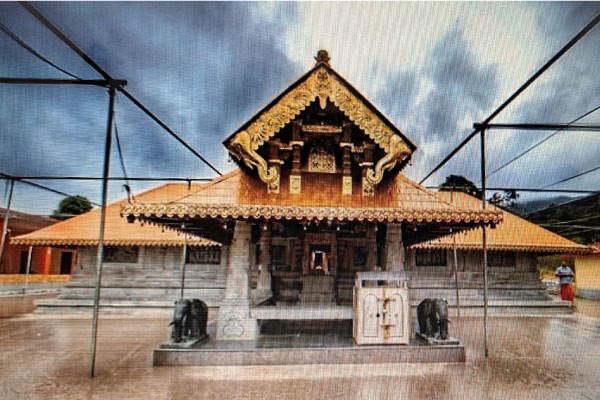
ಶ್ರೀ ಇಗ್ಗುತಪ್ಪ ದೇವಸ್ಥಾನ - ಪಾಡಿ ಕುಂಜಿಲ
Shri Igguthappa Temple - Padi Kunjila
hri Igguthappa Temple, located in Padi (Kunjila), is dedicated to Lord Igguthappa, a deity revered by the Kodava and Kodava Bhashika communities. According to legend, Lord Igguthappa, the fourth celestial child, arrived from Kerala and settled on Malma Hill. His fame spread to surrounding villages, leading to the construction of a temple in Padi where he is worshipped in the form of a Shiva Linga. As the rain god, Igguthappa is venerated by Kodavas, who pray for abundant rainfall for good harvests. The temple plays a central role during the Puthari harvest festival, with the first crop offered to Igguthappa before broader celebrations commence across Kodagu.
Both Malma and Padi are considered very sacred by the Kodava people.
Both Malma and Padi are considered very sacred by the Kodava people.
ಶ್ರೀ ಮೃತ್ಯುಂಜಯ ದೇವಸ್ಥಾನ - ಬಾಡಗರಕೇರಿ
Shri Mrtyunjaya Temple - Baadagarakeri
Shri Mrityunjaya Temple, located in the small village of Badagarakeri (Ponnampet Taluk), is the only Mritunjaya temple in South India. Dedicated to Lord Shiva, this popular and beautiful temple is set amidst a tranquil landscape of coffee plantations. The temple is known for its spiritual ambiance and serene environment.
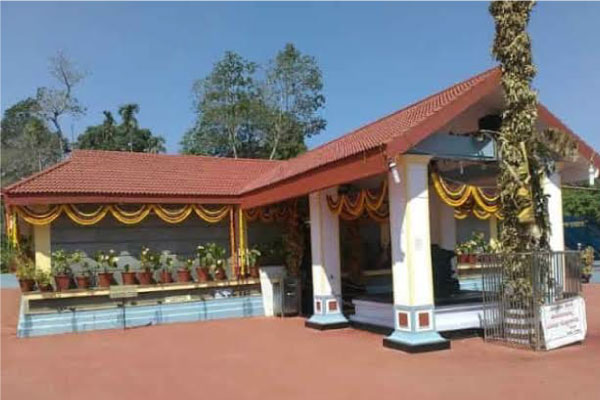
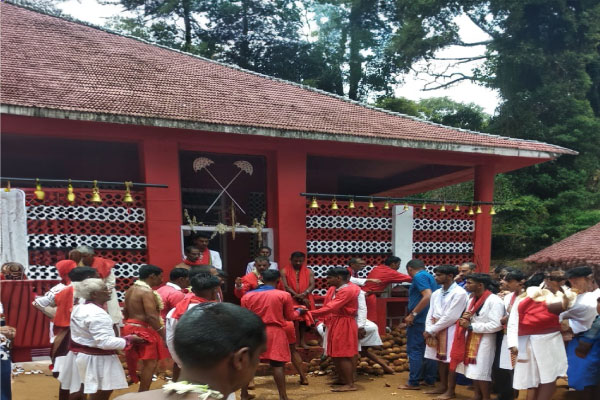
ಶ್ರೀ ಪನ್ನಂಗಾಲತಮ್ಮೆ ದೇವಸ್ಥಾನ - ಯವಕಪಾಡಿ (ಕಕ್ಕಬೆ)
Shri Pannangaalatamme Temple - Yavakapaadi (Kakkabe)
Shri Pannangaalatamme Temple, located in Yavakapadi village near Kakkabe, is dedicated to Pannangaalatamme, the sister of Lord Igguthappa. The temple’s festivals are celebrated by both Kodava and Kembatti community with unique rituals conducted by the Kembatti community. Notable aspects of the event include the "Oli Kode" (umbrellas made of bamboo) and "Kurnda Kali" rituals, which are highlights of the celebration.
ತಿರ್ ಕುಂಡ್, ಶ್ರೀ ಮಾದೂರಪ್ಪ ಈಶ್ವರ ದೇವಸ್ಥಾನ - ಬಲಂಬೇರಿ
Tir Kund, Sri Madurappa Eshwara Devasthana - Balamberi
Balamberi is considered the second most sacred place for the Kodavas. According to mythology, sage Agastya failed to protect the kamandal, which was the abode of his wife Cauvery. As a result, a fierce storm arose, causing the kamandal to roll and allowing Cauvery to flow freely. She eventually reached Balamberi, where her devotees begged her to return. Moved by their devotion, Cauvery partially consented, though her course was already determined and irreversible. The legend also explains that the forceful waters displaced the pleats of the women devotees' sarees, leading to a permanent change in the attire of Kodava women at ತಿರ್ ಕುಂಡ್ (Tir Kund).
